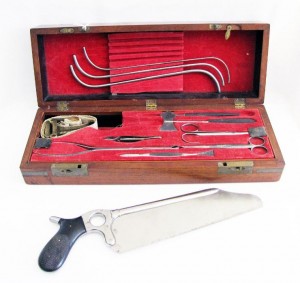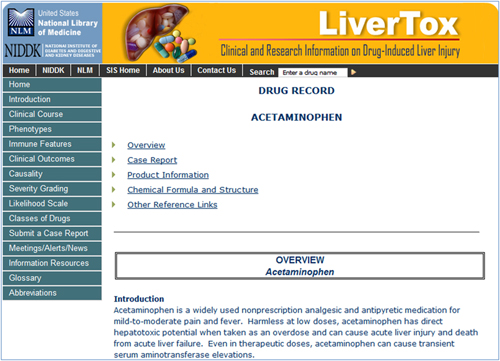Report from Educause 2012
University of Colorado Health Sciences Library Denver, Colorado Jeff.Kuntzman@ucdenver.edu

EDUCAUSE ( http://www.educause.edu ) is a well-known nonprofit organization that focuses on the intersection between higher education and information technology. EDUCAUSE sponsors a two and a half day national conference every year; in addition to that there are also many regional EDUCAUSE conferences across the country. Thanks to the NN/LM MCR, I was able to attend this year’s national conference in Denver, Colorado in early November. This year the conference had 4,672 registered participants. Attendees came from all over the United States and there were 49 other countries represented.
A couple of themes were heavily represented at the conference. One was that of the increasing importance of cloud computing, and another was the recent rise and incredible success of free, online, but not-for credit “MOOCs” or massively open online courses (as offered by large institutions like Stanford and MIT). Read more »
Upcoming Changes to NIH Public Access Policy
- Reporting Requirements and Related NIH Efforts to Enhance Compliance
The National Institutes of Health (NIH) Public Access Policy enables free public access to published results of NIH funded research through the PubMed Central digital archive. This archive began operating in 2000 with content from just two journals. It now contains over 1200 journals; boasts over 2.6 million articles; and, is fully linked to searches generated in PubMed.
If your institution receives NIH funding, it’s important that all parties in the research process – including librarians – understand how to comply with this policy. Read more »
Whooo Says
Dear Whooo,
I’ve been reading your column for the last few years, and it has sparked some thoughts about how I and other librarians perform our work. I am a solo librarian in a hospital with little opportunity to get together with librarian colleagues, so I’d like to ask you my question.
I’m becoming concerned that I may not be providing the highest quality service to my users. I have taken several searching classes and feel pretty confident, but I’m never quite positive of the completeness and accuracy of my search results. This has made me start to evaluate the other services and materials I provide, and I wonder how this is impacting patient care in my hospital. Do you have any ideas for me?
Thanks for your help,
Wondering Read more »
History of Medicine Collections at the University of Colorado
Aurora, Colorado Emily.Epstein@ucdenver.edu
The James J. Waring, M.D., History of Medicine and Health Sciences Collections of the Health Sciences Library at the University of Colorado Anschutz Medical Campus contain approximately 1700 volumes divided into two collections, a circulating collection and the Rare Materials Collection, which does not circulate. Both contain titles in medicine, nursing, pharmacy, dentistry, and biology, reflecting the history of the health sciences and the University of Colorado Denver Anschutz Medical Campus.
The Waring Collection consists of approximately 7,000 modern works on all aspects of the history of medicine and related fields, plus works on medical topics published between 1876 and 1913 that do not require the special handling of rare materials. The Waring Collection resides in the Special Collections Room, along with the Indigenous Medicine and the Medical Humanities Collections. In addition to the usual library seating, the room has comfortable chairs, natural light, and a view of the Rocky Mountains.
The Rare Materials Collection consists of nearly 10,000 volumes, plus photographs, over 150 artifacts dating from the mid-19th century to the mid-20th century, and a few archival materials. These items, because of age, value, or rarity requiring special handling and security, are housed in a secure temperature- and humidity-controlled area adjacent to the Special Collections Room, and are available for use by appointment.
Most of the collection is printed material. Just under half are journals, which were transferred from the stacks when the library moved to the new building in 2007. The rest are 15th- through 20th-century books, mostly 19th-century. Subject strengths include tuberculosis, respiratory medicine, cardiology, and homeopathy. The collection has grown primarily by gift, especially from doctors James Waring, Gerald Webb, Charles Denison, and Florence Sabin. Read more »
Internet Access via iPads for Community Based Organization Outreach
Three community based organizations are currently partnering with the National Network of Libraries of Medicine, MidContinental Region (NN/LM MCR) to support access to relevant health information resources for their users. The NN/LM MCR provided each of these organizations with an Apple iPad with a cellular data plan. This allows the organizations to have Internet access where they normally would not during their outreach activities. Additionally, participants have received training on health information resources from the National Library of Medicine and on the use of the iPad. Read more »
Are You EHR Ready?
Resources for Electronic Health Records
The use of Electronic Health Record (EHR) systems in the United States has been growing dramatically in the last few years, primarily due to the Health Information Technology for Economic and Clinical Health (HITECH) Act and the Centers for Medicare & Medicaid Services (CMS) incentive programs.
Under the HITECH Act, eligible health care professionals and hospitals can qualify for CMS incentive payments when they adopt certified EHR technology and use it in a meaningful way. What is considered “meaningful use” is evolving in three stages: Read more »
New PubMed Tricks
University of Colorado Health Sciences Library Aurora, Colorado lynne.fox@ucdenver.edu
 PubMed has added some great features in the past year. PubMed’s three column layout now provides space for filters and useful sidebars, along with your results.
PubMed has added some great features in the past year. PubMed’s three column layout now provides space for filters and useful sidebars, along with your results.
Probably the most helpful of the changes is the substitution of Filters in the left hand sidebar replacing the old Limits page. Point and click access allows users to quickly select from a wide variety of filters to focus your search results. PubMed users can select from ten different categories, each offering multiple choices. Read more »
NIH launches LiverTox:
- a free database of drugs linked to liver injury
Prescription medications are one of many culprits leading to liver injury. In data retrieved from a national registry, researchers found that herbal and dietary supplements were implicated in 18% of liver injury cases caused, or suspected of being caused, by drugs or supplements from 2003 to 2011.
LiverTox provides up-to-date, accurate, and easily accessed information on the diagnosis, cause, frequency, patterns, and management of liver injury attributable to prescription and nonprescription medications, herbals, and dietary supplements.
LiverTox also includes a case registry that will enable scientific analysis and better characterization of the clinical patterns of liver injury. The LiverTox web site provides a comprehensive resource for physicians and their patients, and for clinical academicians and researchers who specialize in drug induced hepatotoxicity.
This database is a collaboration between the National Library of Medicine and the National Institute of Diabetes and Digestive and Kidney Diseases.
- Dana Abbey, Colorado/Health Information Literacy Coordinator






